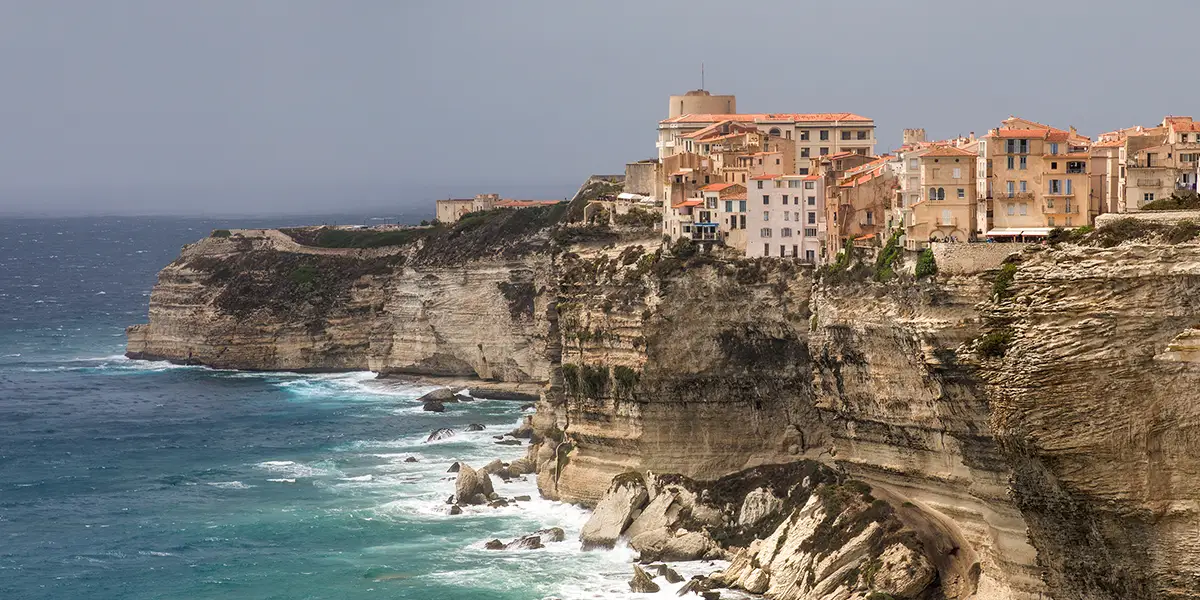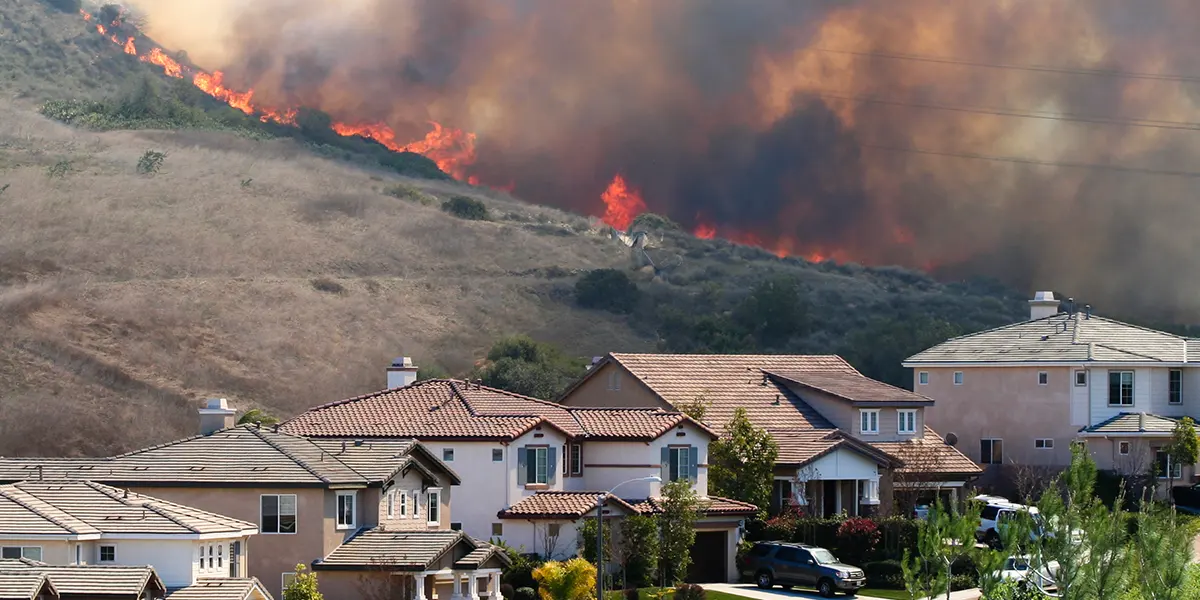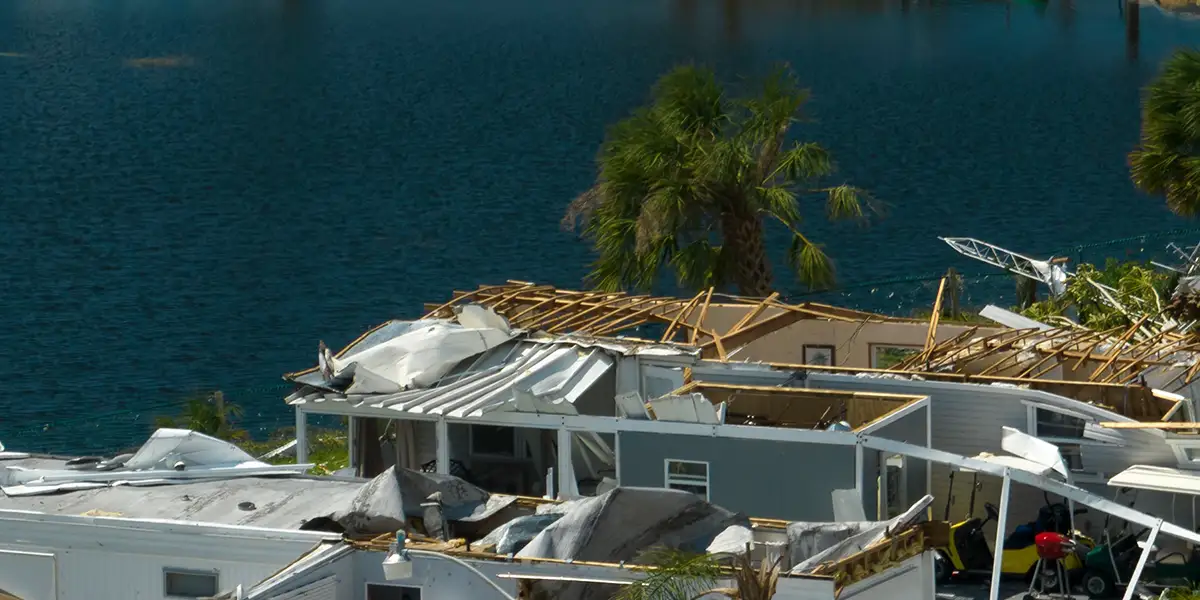As a lowly climate scientist my job is to calculate present and future physical risk from climate change. Over the past 6 months I have been working at Climate X, leading the development of our climate physical risk and impact modelling system. My day-to-day work is quantifying how likelihoods of extreme and damaging weather will change in different future climate change scenarios, and how much it will cost us. We aim to deliver these risk assessments to clients in banking and finance.
I’m by no means an expert in the finance and banking sector. A few months ago I was almost entirely naïve to the inner workings of this sector – I can tell you how the weather works but ideas like ‘probability of default’ and ‘loss given default’ were entirely mysterious to me. As I learn more about the system and how it works I sure am grateful that it is regulated, even more so that the regulator has decided that the sector should be better prepared for future climate change impacts. Having worked in climate and environmental sciences for most of my career, it is reassuring to see that the risks and impacts are finally being taken seriously.
My main foray into the finance system has been through the NGFS and CBES documentation. On the off chance you are not aware, the Network for Greening the Finance System is an international effort to predict and mitigate the risk from climate change. The Climate Biennial Exploratory Scenario is a framework recently released by the Bank of England to assess the sector’s exposure to, and preparedness for climate impacts, which will likely lead to more regulated assessments in the near future. CBES is currently a preliminary exercise, and much of the framework is based on the future climate and finance scenarios generated by the NGFS.
There are 4 widely-used future emissions scenarios in the scientific community. These have formed the basis of future scenarios for the IPCC reports (previous to the most recent IPCC report which now contains 6 combined emissions and socio-economic climate pathways). These scenarios are called representative concentration pathways, from lowest to highest emissions they are: RCP 2 .6, RCP 4.5, RCP 6.0, and RCP 8 .5. As a rough guide, the RCP 2.6 low emissions scenario corresponds to very drastic action on our part, leading to net zero emissions by 2050 and even going to negative emissions (taking carbon back out of the atmosphere) after that. RCP 8.5 is the ‘business as usual’ scenario, where very little to no action is taken to cut carbon emissions, leading to a large temperature rise and associated extreme weather impacts. The other 2 scenarios sit in between these.
The NGFS has produced a selection of scenarios around climate change and the financial impacts of this. From a physical climate point of view these are only 2 climate change scenarios, with a few different financial and societal pathways through each of these scenarios. The two physical scenarios are RCP 2.6 and RCP 8.5. The sad news is that, in reality, we are very much on the highest emissions pathway. Even sadder news is that the low emissions pathway is seen by the scientific community as not just overly optimistic, but almost impossible to achieve given society’s current use of energy and approach to carbon-limiting policy. Given the combinations of physical scenarios and financial scenarios in NGFS, only 1 out of 4 of the scenarios they consider is realistic from a climate change point of view.
Taking this a step further, the Bank for England has generated its own slightly different set of climate scenarios for CBES, based mainly on the NGFS scenarios. The Bank has chosen to focus far more on the optimistic scenario, and has even pulled back the severity of their high emissions scenario. The Bank has decided the worst-case warming scenario places us at 3.3C warming by the end of the century and has subsequently selected the RCP 6.0, rather than RCP 8.5, as its favoured scenario to arrive at this point. Additionally, the Bank has generated 2 different financial pathways through RCP 2.6 - effectively doubling the work required to explore the least likely scenario.
The Bank also takes bits and pieces from each of the 4 IPCC emissions scenarios and mixes them together to make its projections. This is getting into physical climate change scenarios which are slightly removed from those that have been modelled in the scientific community, meaning it will be hard to use the scientifically peer-reviewed tools and data available to calculate future physical risks. This also opens up the possibility of setting multiple slightly different standards, not necessarily backed up by the science, making more work for everybody.
In the CBES documentation, the Bank states “some physical risks are likely to crystallise in the period to 2050 but the most material physical shocks are likely to occur later in the century”. This suggests that the Bank’s assessment of the potential for physical risk in the near future is relatively low, as is echoed in their choice of emissions and impacts scenarios. As we are already seeing with climate change-driven weather conditions (supported by scientific projections of these trends continuing), this is an overly optimistic assessment.
I don’t mean to sound alarmist, but this is all a bit alarming. Taken at face value, both the NGFS scenarios and the scenarios that CBES are asking the banking and financial sector to consider are overly optimistic. The recently released GARP report (figure 27) indicates that, when all put together, more financial firms are using low emissions scenarios than high emissions scenarios to make their climate risk projections. From a scientist’s point of view, I’m a bit concerned that the sector will underestimate the associated risks and be caught short at some point in future. We don’t have to look too far back in time to have an idea of what a foresight failure on the part of the finance system looks like for us mere mortals – although in the climate change case we’ll also be living in more of a Mad Max-style wasteland (so at least I get to wear edgy, post-apocalyptic outfits).
So, if we want to avoid the scenario where you’re chasing me across the post-apocalyptic wasteland on a car that looks like it’s built entirely from spikes, what can we do?!
The simple answer is to think about it. Don’t just take the scenarios at face value, think about what it is that you need to know to assess your risk. I know nobody really likes to go beyond the bare minimum when the task feels like a box checking exercise mandated by the regulator, but in this case it’s the smart thing to do.
Having taken my scientific eyes and cast them over the CBES guidelines, I have distilled its essence down to a juicy, informative sauce. Here’s what the Bank asks for, and what you actually need to know to assess your risk.
What the bank is asking for
For the Bank’s ‘low’ and ‘high’ emission scenarios (broadly corresponding to RCP 2.6 and RCP 6.0), an assessment of the impacts of changes across a selection of 8 weather variables: temperature (annual average and daily max), rainfall (annual average, summer and winter average), sea-level rise, windstorm (annual average, daily max, and frequency of tropical cyclone), agricultural yield, wildfire, heatwave, soil moisture. Future changes in these variables are calculated mainly using the UK Met Office UKCP18 climate model (excluding wind). For these variables, participants’ assessments should track with changes in the median (50th percentile) for low emissions scenario, and the change in the 90th percentile for their ‘high’ emissions scenario.
Changes in climate variables must be compared to a baseline which is poorly defined. In the climate model data that CBES recommends the baseline is the average between 1981-2000, however in the CBES documentation the ‘baseline period’ is often used interchangeably with the term ‘counterfactual pathway’, defined as a hypothetical pathway in the absence of any future climate change.
What you should actually care about
Which weather variables are you vulnerable to? At what point does that kind of weather cause your asset physical damage? For example, how much does it have to rain for an asset to be flooded? Is your asset close to the coast? If not, is sea level rise less of a concern for you than rainfall?
Once you know the requirement for the weather, then check the climate model for its changing likelihood. It may not be the 90th percentile of rainfall that causes flooding for your asset, it could actually be the 99th, or it could be 75th. As the extremity of the weather changes in future, what is now the 95th percentile may become the 90th or a lower percentile in a decade or two. It’s important to know your vulnerability as an absolute value, which is fixed, rather than as a percentile which is going to change over time.
Which emissions pathway are we actually on? (It’s the bad one – RCP 8.5.) What’s the probability that we’re going to stay on this path? (It’s not looking great.) It’s nice to know about the best possible futures, but it is important to be realistic when considering your risk.
We enjoy looking to the future with the optimism of rose-tinted glasses, and right now we need that optimism more than ever. If we are well behaved as a society we may get off the worst-case pathway, but this will almost certainly not land us on the best-case pathway. Even the most drastic actions we can take to cut emissions now still leave us committed to a further amount of global warming and the associated extreme weather that comes with this. Age-old wisdom has us hope for the best and plan for the worst. In the case of climate change the worst is far more probable than the best, so we need to make sure we have a plan.
Next steps
If you read this far, feel free to get in touch to discuss any of your physical/transition risk data needs.





